Wednesday 1st March 2023 to Tuesday 7th March 2023
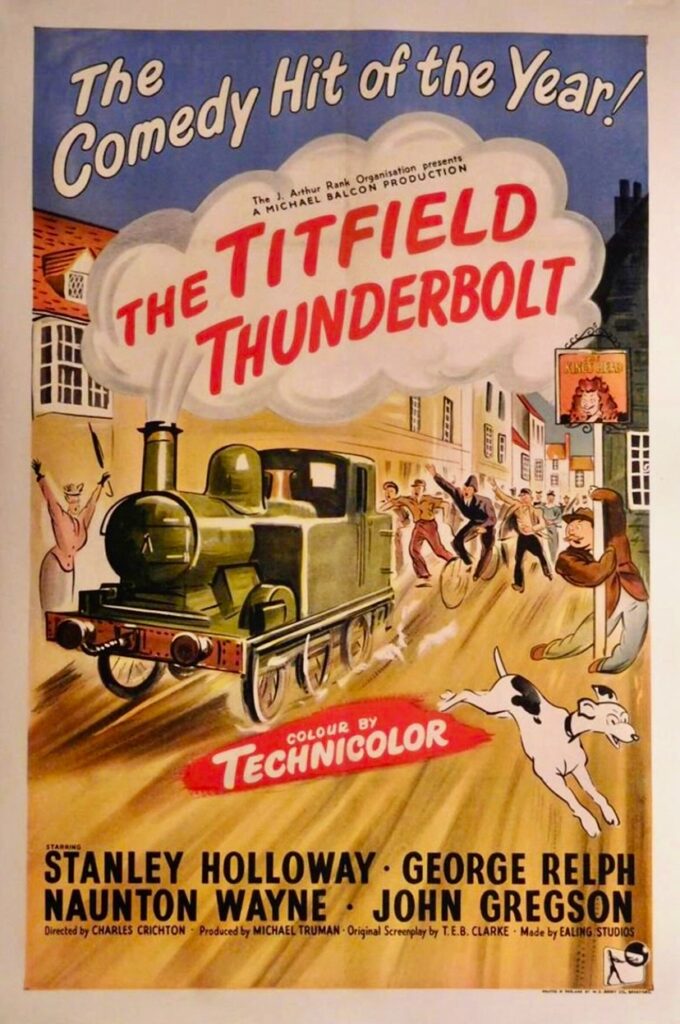
I love an Ealing Studios film, and this week, “The Titfield Thunderbolt” celebrated its 70th Anniversary having been released to the public for the first time on 5th March 1953 with a Gala Premiere at the Leicester Square Theatre in London as part of the British Film Academy’s award ceremony, before going on general release from the 6th. Filmed in 1952, the feature was mostly shot on the Camerton branch between Camerton and Limpley Stoke on the Cam Brook Valley near Bath which had closed to traffic in February of the previous year. Monckton Combe railway station stood in for Titfield while the village scenes were shot in Freshford. The Fish Bay platform at Bristol Temple Meads makes cameo appearances as Mallingford railway station.
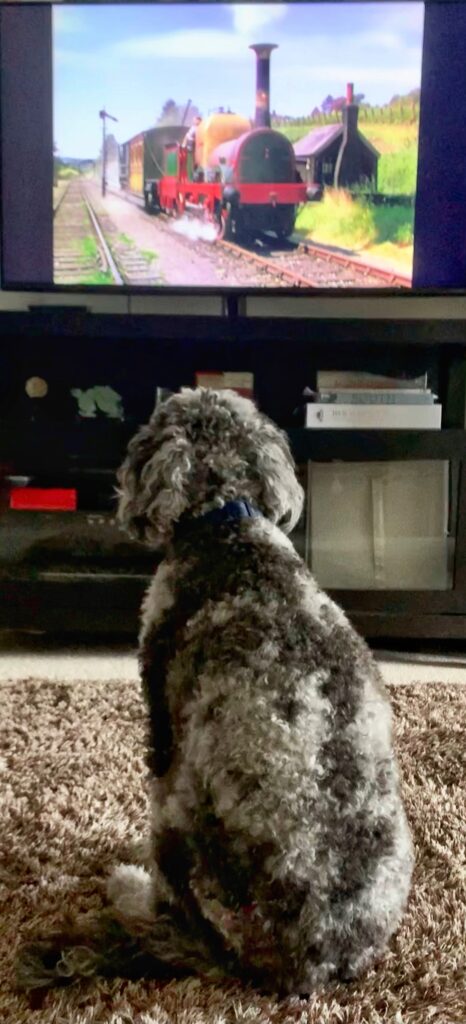
“The Titfield Thunderbolt” was inspired by the real life story behind the rescue of the Welsh narrow-gauge Talyllyn Railway in 1951. Directed by Ealing stalwart Charles Chrichton (1910-1999), starring Stanley Holloway (1890-1982) and with a screenplay by another Ealing old hand T.E.B. Clarke (1907-1989) the film opens with a view of Midford Viaduct on the Somerset & Dorset Joint Railway (S&DJR) as a train on the Camerton branch passes underneath. Midford is on our bucket list to explore one day, especially as there is a conveniently placed pub – the Hope & Anchor – located under the old S&D viaduct, the trackbed now forming a footpath and cycleway. The pub website notes: “The single line section between Midford & Bath required a special safety device known as “The Tablet”. A train about to enter this section had to pick up the tablet by means of a mechanical catcher. If the tablet was not there it meant another train was already on that stretch of track. Sometimes the act of giving up the tablet on the outward journey would result in the (accidental?) dropping of the tablet down the embankment into the garden of the inn. By some strange quirk of fate, this seemed to happen a lot more frequently during opening hours and climbing down to retrieve it was thirsty work!”
Foreshadowing the Beeching report which would be released ten years later, “The Titfield Thunderbolt” tells the story of group of villagers determined to save their branch line after British Railways announces its closure. When a rival bus company, who have signed a deal with the nationalised railways to run a replacement service, sabotages the newly acquired train prior to an official inspection, the villagers resurrect the line’s first locomotive, ‘Thunderbolt’ which is being kept in the Mallingford Town Hall museum.
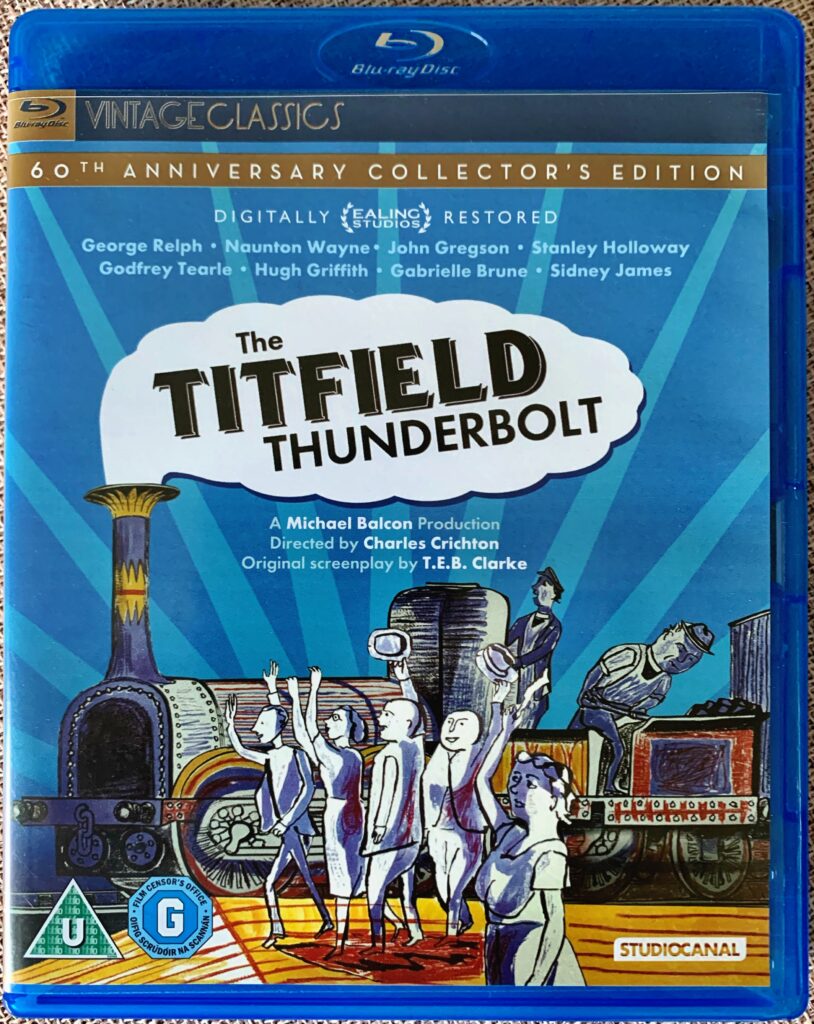
The actual locomotive chosen to “play” the role of ‘Thunderbolt’ was Liverpool & Manchester Railway (LMR) 0-4-2 No. 57 ‘Lion’ built by Todd, Kitson & Laird of Leeds. The March 1953 edition of “The Railway Magazine” tells us the film studio borrowed the veteran loco from the Liverpool Engineering Society who, as well as allowing the application of a new nameplate, gave permission for her to be painted in a fictional bright green with red lining livery. ‘Lion’ had been in store at Crewe painted in her original dark maroon colour and was transported to Westbury in Wiltshire for an overhaul and steaming test, which proved most satisfactory, her original steam pressure gauges checked against a modern counterpart with one being correct to within a pound. Shortly after production commenced it was discovered that ‘Lion’ consumed excessive amounts of fuel and water, it was thought because she was originally designed to burn coke rather than the coal being used. The locomotive was sent back to Westbury where a damper was fitted which enabled her to simmer all day awaiting periods of sun during which scenes would be filmed. The daily filming schedule was carefully arranged to reduce the requirement to turn the locomotive and rolling stock, but when this was needed the triangle junction at Bradford-on-Avon was utilised. Various items of rolling stock were employed, including an old Great Eastern coach, two brake vans (one containing a diesel generator for arc-lighting), a cattle truck and several flat wagons as well as two Great Western Railway (GWR) 1400 Class 0-4-2 tank engines No.’s 1401 and 1456. No. 1456 provided banking assistance to ‘Lion’ on the 1 in 100 gradients between Limpley stoke and Combe Hay when scenes were not being filmed.
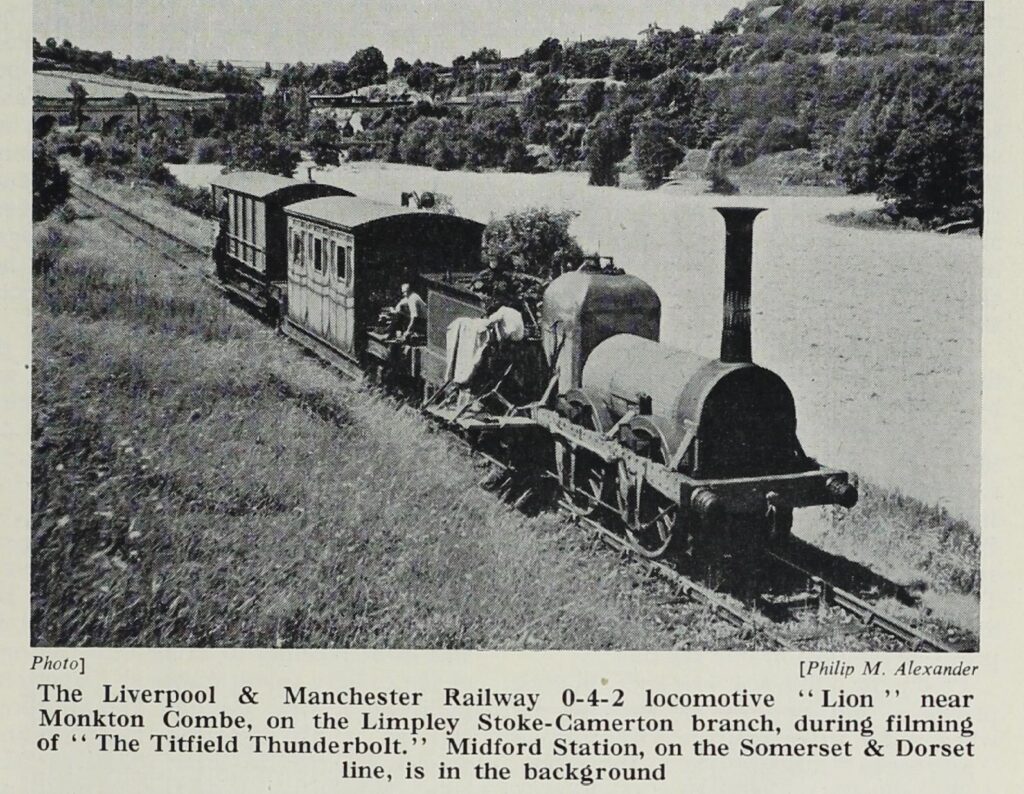
I remember seeing ‘Lion’ in 1980 when she took part at “The Great Railway Exposition” in Manchester in connection with “The Rocket 150” celebrations marking the 150thAnniversary of the Rainhill Trials in 1829 and the opening of the Liverpool & Manchester Railway in September 1930. Unfortunately, along with other locomotives, she was on display in what I remember as being quite a gloomy shed area and my camera at the time would have been unlikely to have captured an image in the darkened conditions. Today you can see ‘Lion’ on static display at The Museum of Liverpool.
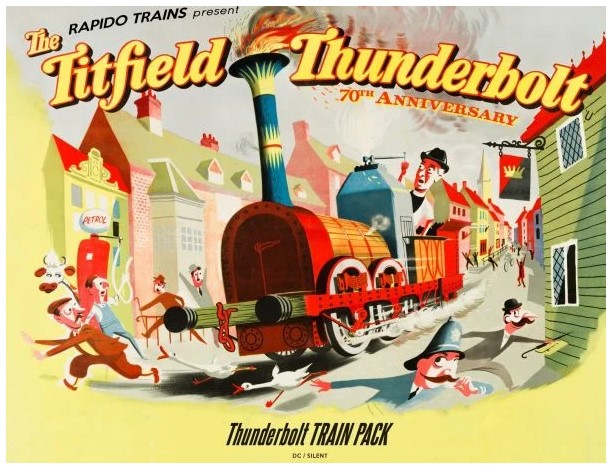
Rapido Trains are developing a special range of models celebrating the 70th Anniversary of “The Titfield Thunderbolt”. These are the only models licensed by StudioCanal the current rights owner of the film.
Hornby Horbies Ltd had announced they too were going to release a ‘Thunderbolt’ model but have since withdrawn this from their schedule as licensing permission was not gained. They have however pushed ahead with their model pack of ‘Lion’.

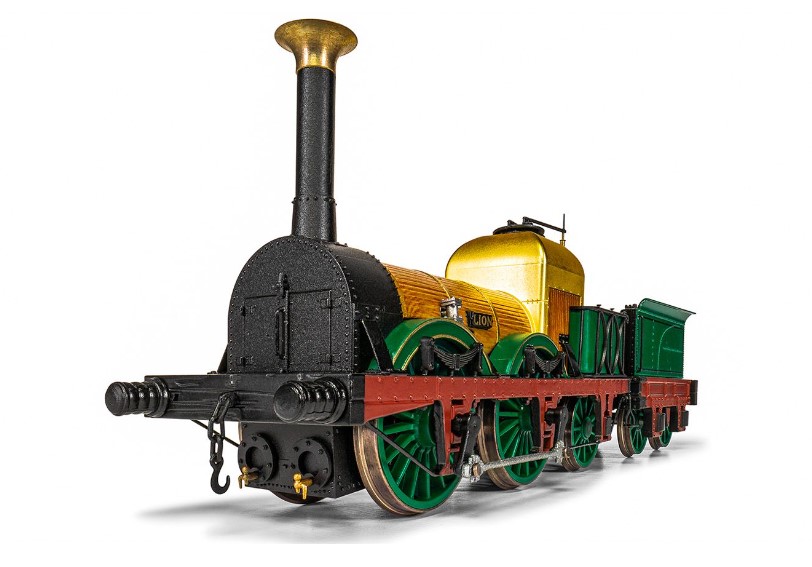
You would think that the combination of Ealing Studios and railways would result in “The Titfield Thunderbolt” being my favourite film, but that honour falls to another Ealing production; “The Ladykillers” (1955) which also happens to feature extensive railway scenes, this time around King’s Cross in London. If you haven’t seen it, I highly recommend it. “The Ladykillers” was remade in 2004 with Tom Hanks and the location swapped to Mississippi. I don’t know why anyone thought this was a good idea.
The two five car Class 701 units, No.’s 701509 and 701512, which I mentioned last time I had missed seeing in Dorset made a return visit on Thursday 2nd March 2023, and this time I was ready and waiting for them! Here’s some video as they arrive and depart Poole.
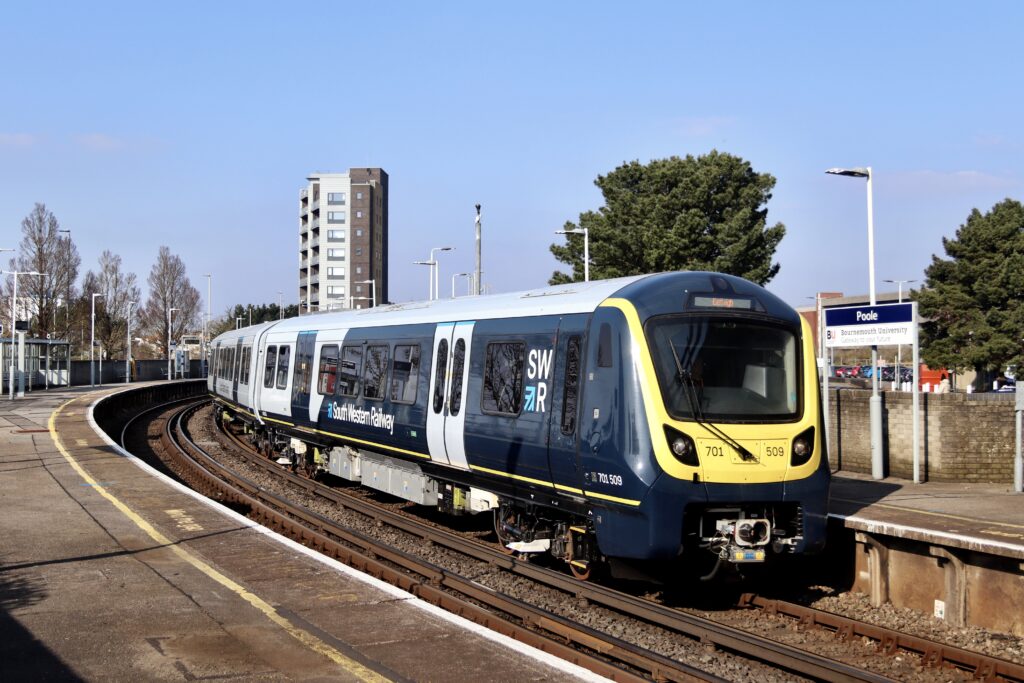
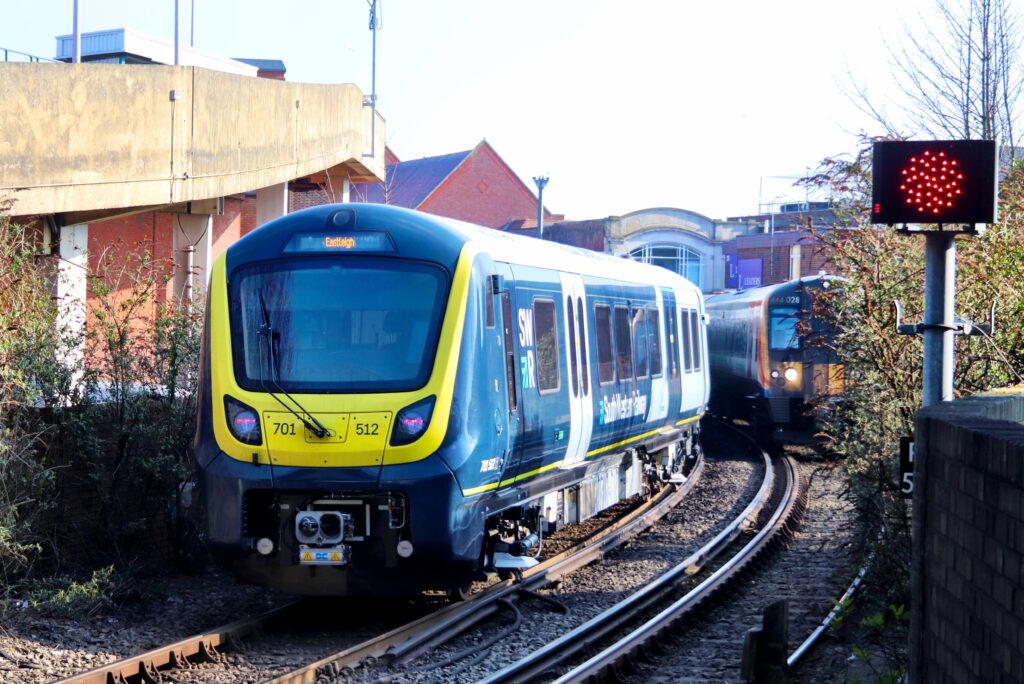
The Snow & Ice Treatment Train made an appearance on the Bournemouth to Weymouth line on Monday 6th. Its earlier scheduled run on Friday 3rd March was cancelled, so it was good to see the train run. And in daylight too, which was a bonus! We were pleased to see that large logo British Rail retro liveried GBRF Class 66 No. 66789 ‘British rail 1948-1997’ was one of the pair of locomotives allocated to the service, the other being No. 66750 ‘Bristol Panel Signal Box’.
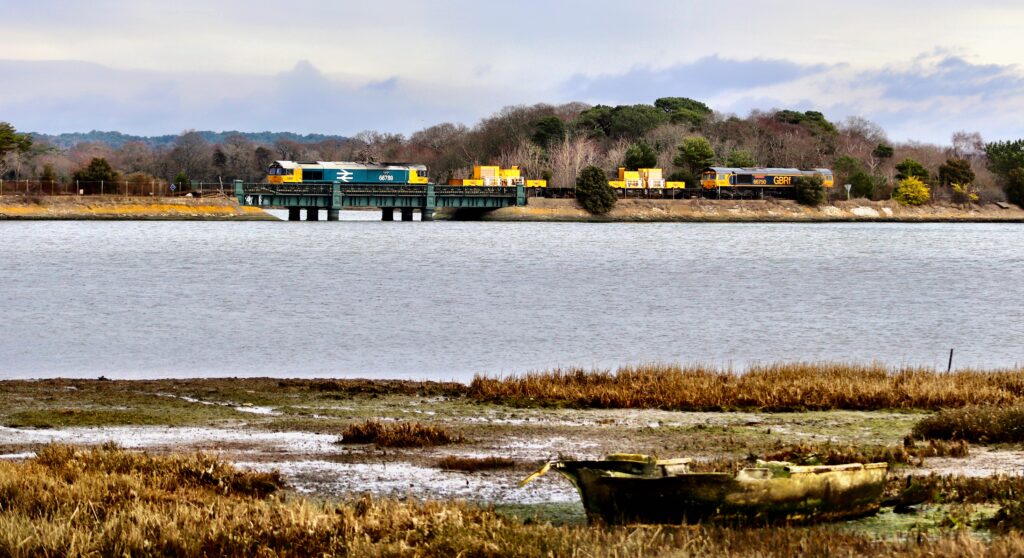

Taking Yoshi for a walk around Hamworthy Park recently, we passed under Lake Road bridge. It looks as if a vehicle wasn’t quite so lucky and deviated from the road and into the newly installed gate protecting the new access steps to the Hamworthy branch line above. Coupled with the damage to the warning lights at Ashmore Avenue crossing, I’m beginning to think someone doesn’t like the idea of the freight line re-opening!
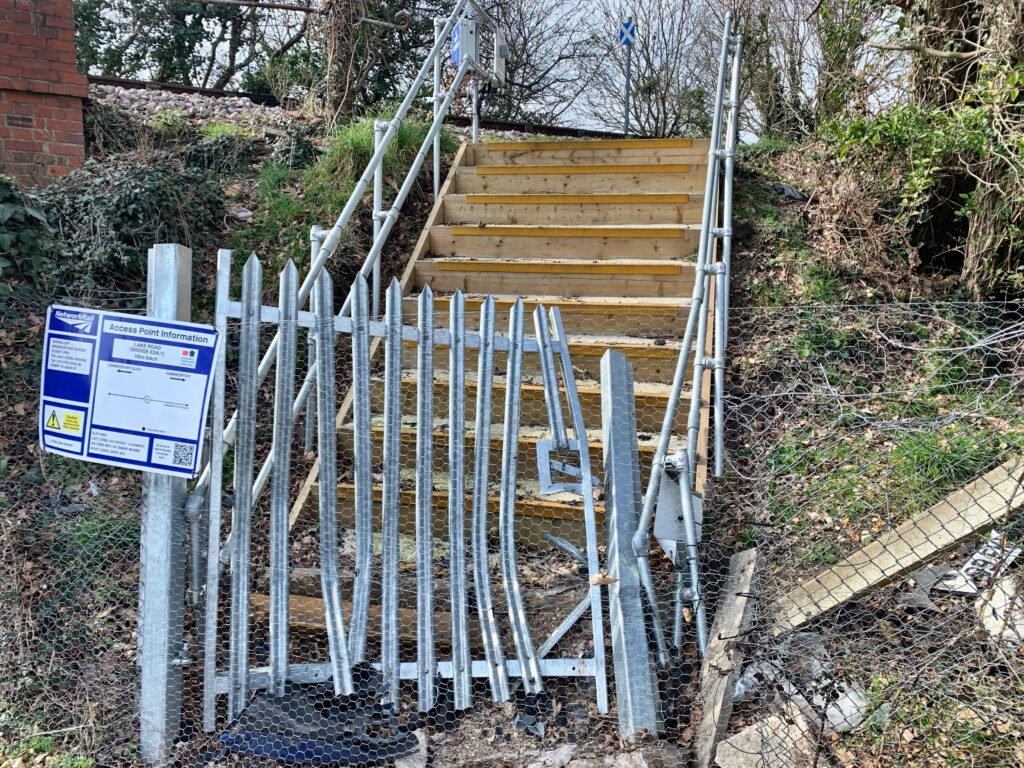
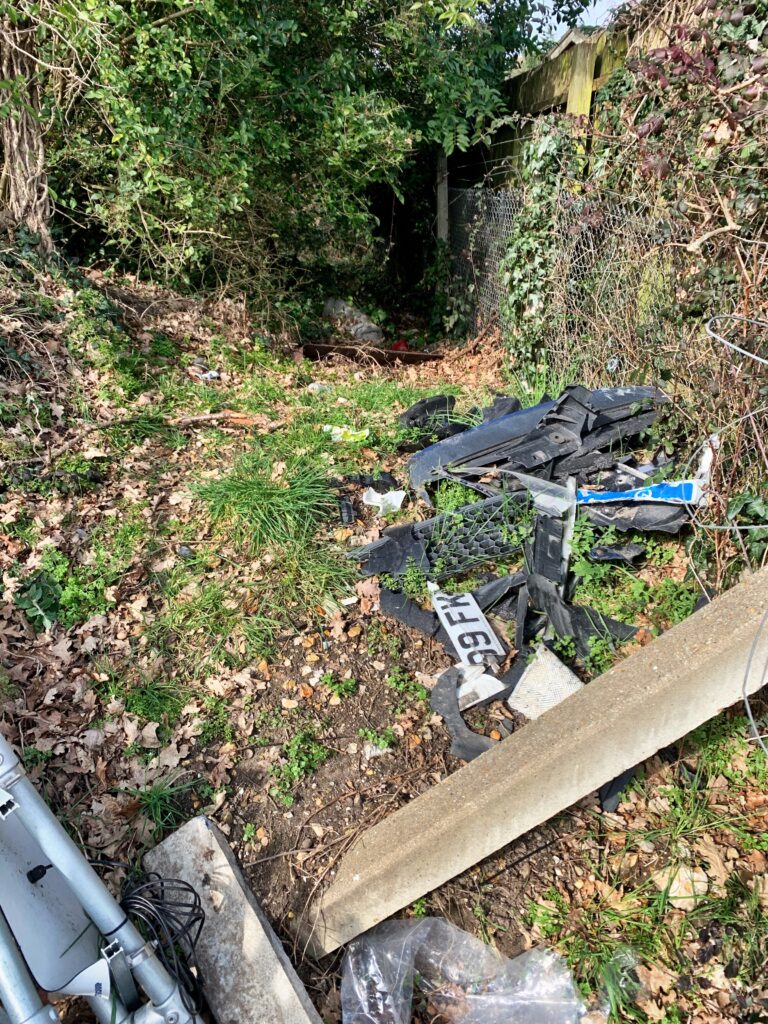
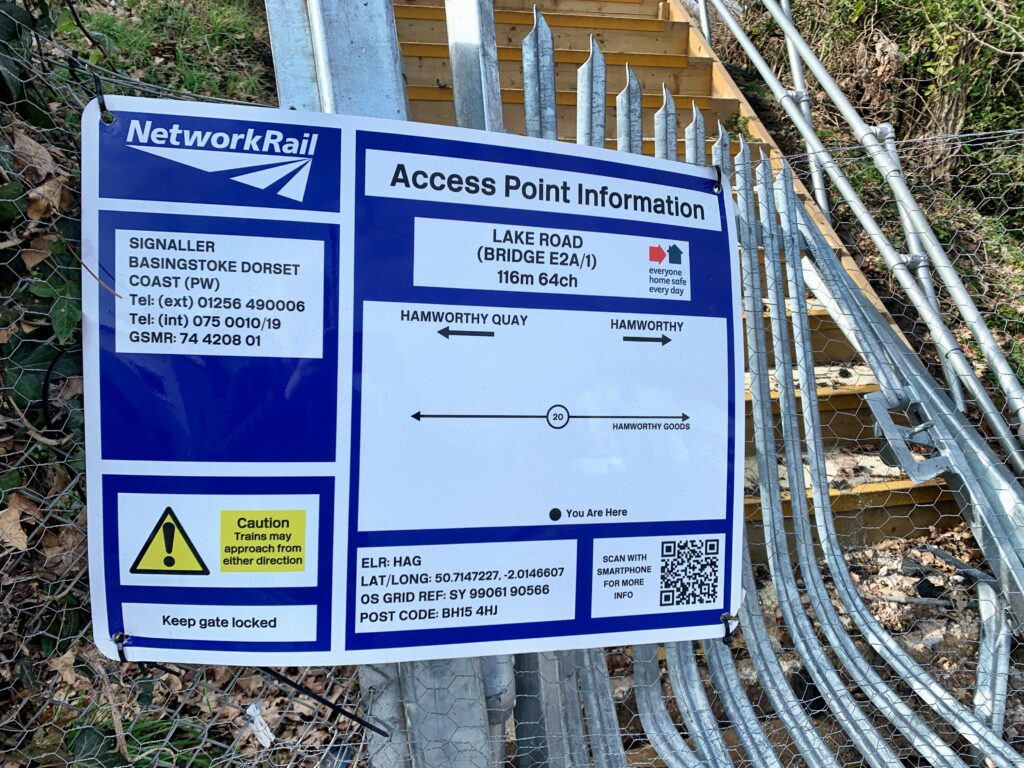

For The Record
I forgot to mention that the South Western Main Line resumed a full timetable on 24th February 2023 following reinstatement works following the major landslip at Hook which occurred on 15th January 2023 and affected Weymouth to London Waterloo services.
Sad news that John Parry MBE, creator of the Parry People Mover ultra-light vehicles passed away on 17th February 2023 after a short illness. He was 85. The most successful UK application of his idea is the 0.8 mile Stourbridge Junction to Stourbridge shuttle which operates every ten minutes between 0545 and 2354 Monday to Saturday with a more limited service on Sundays. These have been operated by pair of Class 139 Parry People Movers since their introduction to the branch, claimed to be the shortest in Europe, in 2009. The class 139’s are powered by Ford 86hp 2..3 litre LPG fuel engines and have flywheels to capture the energy generated which is then reused for acceleration and on-board systems. I mention it here as in 1996 an early version of a Parry People Mover was trialled on the much missed Weymouth Quay Branch in September 1996. You can watch a fascinating record of this on You Tube here.

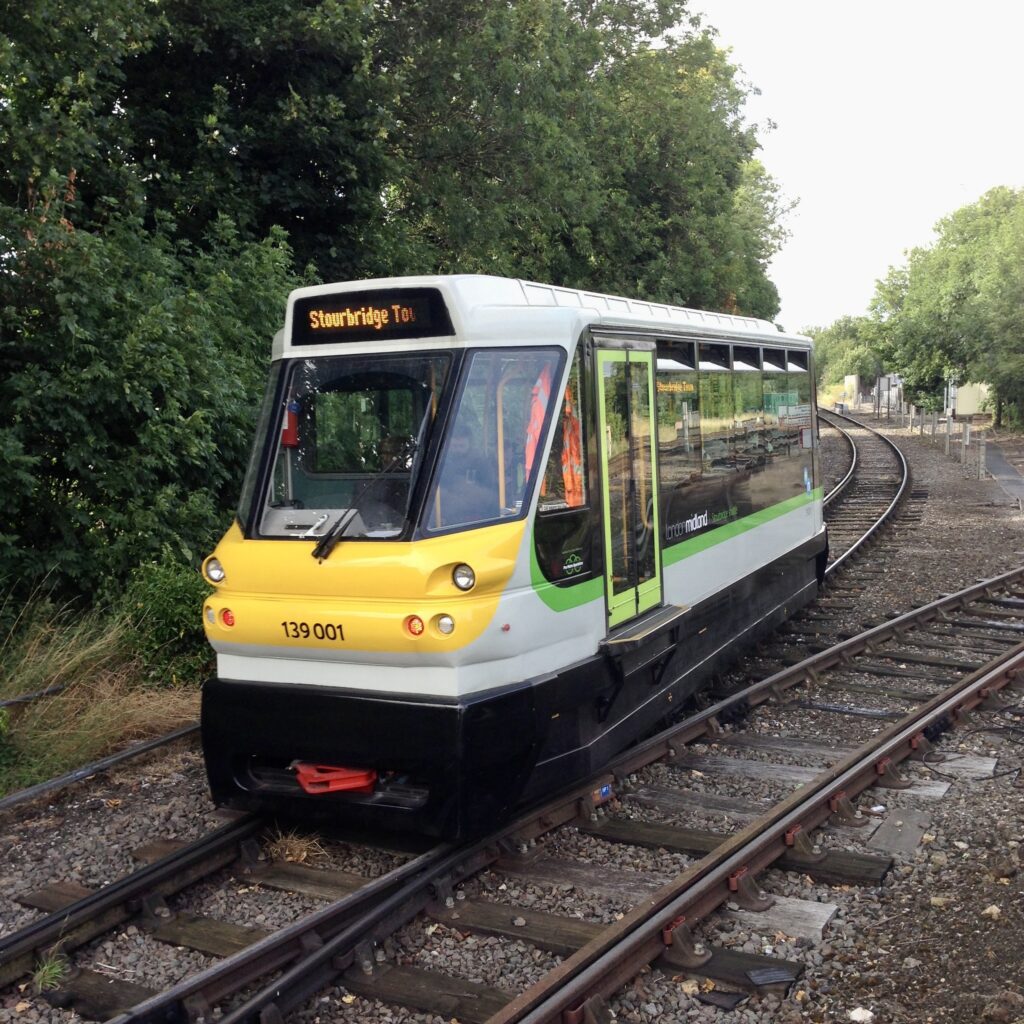
The RMT union has suspended industrial action, including strikes and an overtime ban, at Network Rail following the receipt of a new pay offer. Strikes remain on for now at 14 train operating companies – including South Western Railway (SWR) and Great Western Railway (GWR). More updates will be released over the coming days.
Train ticket prices in England and Wales increased by an average of 5.9% on Sunday 5th March 2023 – the largest fare hike in a decade.
South Western Railway (SWR) is set to trial the use of QR codes soon to allow mobile phone users to access features including “real-time journey information” as well as a suite of further modules relevant to their trip. A select number of train services, including London Waterloo to Weymouth services, will feature QR codes located in prominent areas of the train such as seat backs, tables, accessible areas and toilet facilities. The innovative technology developed by software experts Whoosh will also allow passengers to use features such as “Talk to Us” to communicate with SWR about any issues on their journey, including on board faults and the digital service will know where the communication is coming from and be able to automatically populate areas of the report.
That’s it for this week. It’s been a quiet one for me on the full size railway scene, but I was busy at the weekend putting floor boards down in our loft space in preparation for a model railway layout. I’ll be honest, this project has taken me far longer to get to this stage than I would have liked and my accidental mis-step resulting in putting my size 10’s through the ceiling was a low point (but not as low as it could have been as the rest of me didn’t follow my feet!), but good progress has been made over the last few weeks and I’ll soon be looking at building the baseboards for the railway track when funds allow. Thank you, as always, for stopping by and your comments and corrections. This weeks blog was brought to you with The Who “Tommy Live at The Royal Albert Hall”, The National (their latest offering “New Order T-Shirt” is just my cup of tea, or even my caramel latte) and Depeche Mode (who should really come and play a concert at the Weymouth Pavilion instead of all the big international venues they like to frequent). See you next week, take care and may your dog go with you.

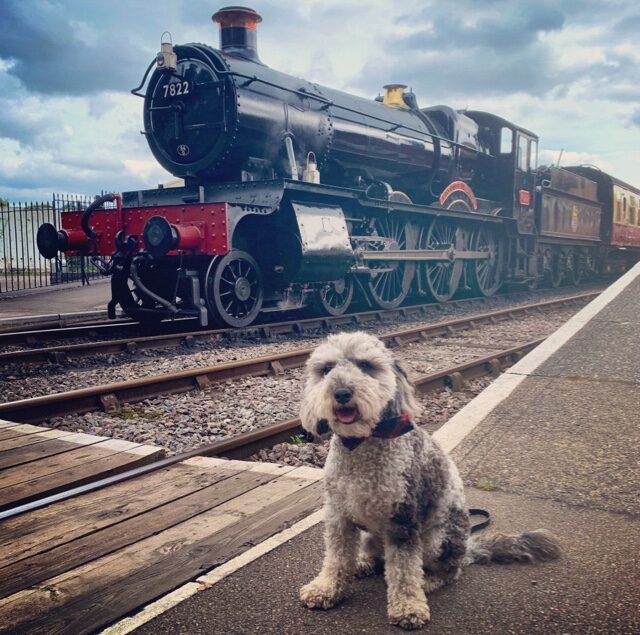
I saw Titfield and I thought Thunderbolt. And concur, The Ladykillers is the best Ealing Comedy.
This a fundamental truth!
Love those Parry People Mover taxis.